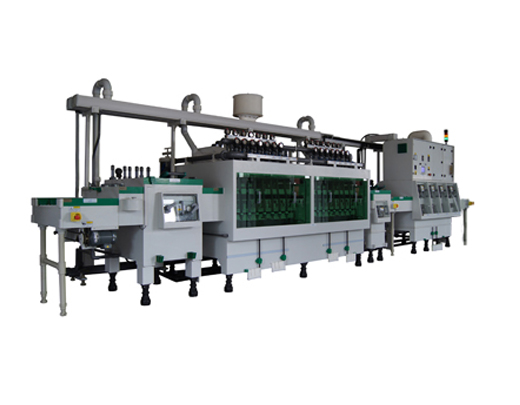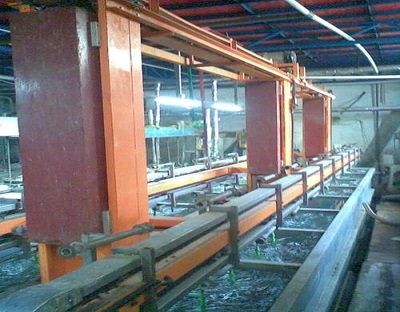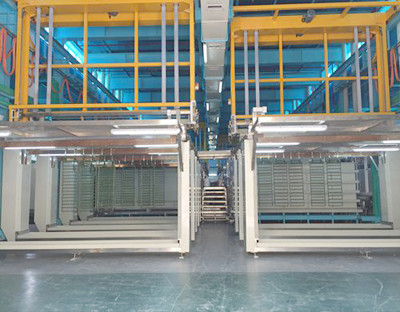Electroplating technology has developed to today and has become a very important modern processing technology. It is not only a metal surface protection and decorative processing method, although protection and decorative plating still account for a large proportion of electroplating processing. The functional uses of electroplating are becoming more and more extensive. The electroplating industry, as the basic industry of the manufacturing industry, will play a fundamental role in the realization of a manufacturing powerhouse. It can be said that the application of electroplating technology has supported China’s manufacturing industry.
Application of ten keyareas of electroplating technology
1. A new generation of information technology industry
The new generation of information technology industry relies heavily on basic equipment such as integrated circuits and special equipment, information communication equipment, and electronic computers. Electroplating technology is needed to ensure the stability of the equipment. Among them, high-phosphorus electroless nickel plating is widely used in the electronics industry due to its unique corrosion resistance and wear resistance, stable non-magnetic, high resistivity and heat resistance.

2. High-end CNC machine tools and robots
At present, most CNC machine tools and robots are made of metal parts and need to accept high-intensity repetitive actions and high-temperature and high-pressure working environments. Electroplating technology helps to improve their mechanical strength, ensure reliability and accuracy, and maximize their corrosion resistance, conductivity, lubricity, heat resistance and surface aesthetics.
3. Aerospace
The entire aerospace equipment industry chain is in the field of high-end equipment and new materials. The performance requirements of parts and components are high. It is necessary to ensure that their performance stability, quality reliability, environmental adaptability, service life and other indicators meet the corresponding standards. For example, the system integrated chassis of the aircraft is made of special aviation metal materials, which is pressure-resistant and corrosion-resistant. Needless to say, the embedded circuits and plugs are all aviation-specific products to ensure that they are firm and must not be loosened, let alone short-circuited. .
4. Marine engineering equipment and high-tech ships
Seawater is a very corrosive medium in nature. Especially with the development of economy, the pollution of offshore areas is increasing, which makes the seawater environment more complicated, and also makes the problem of metal corrosion in the seawater environment more prominent. Because marine engineering equipment and structural parts are in service in harsh corrosive environments, their underwater structures are subject to seawater erosion and microorganisms for a long time, so higher requirements for their corrosion resistance are required, and electroplating technology is needed to improve them Corrosion resistance.

5. Advanced rail transit equipment
High-speed railway tracks need to withstand extreme weather tests, especially in plateau areas, which also need to overcome the technical problems of plateau frozen soil. Therefore, some metal surface treatment technologies need to be used on railway tracks to resist these extreme tests. Metal surface treatment can greatly improve the performance of rails or high-speed trains, such as anti-corrosion, anti-rust, anti-wear, electrical conductivity, lubricity, strength, heat resistance, weather resistance and other characteristics.
6. Energy-saving and new energy vehicles
The core components of energy-saving and new-energy vehicles, such as drive motors, high-efficiency internal combustion engines, advanced transmissions, and lightweight materials, require electroplating technology to support. On complex-shaped automotive parts, such as gears, radiators and fuel injectors, chemical nickel plating is also required. Process protection.
7. Power equipment
Power equipment needs to make breakthroughs in the manufacturing technology of key components and materials such as high-power power electronic devices and high-temperature superconducting materials, and promote new energy and renewable energy equipment, advanced energy storage devices, power transmission and transformation for smart grids, and user-side equipment. This requires electroplating technology to provide hardware protection.
8. Agricultural machinery and equipment
Many agricultural machinery and equipment need to be used in scorching sun or humid environments, and their surfaces are often in contact with soil and sewage, which are prone to corrosion and rust. Therefore, its parts and surfaces need to be electroplated to ensure its protective performance.、
9. New materials
With special metallic functional materials, high-performance structural materials, functional polymer materials, special inorganic non-metallic materials and advanced composite materials as the development focus, electroplating technology is of great significance to the research in these fields.

10. Biomedicine and high-performance medical equipment
Because medical devices are in direct or indirect contact with the body, they may even be implanted inside the body for a long time, so their safety requirements are very high. Many parts of medical devices are made of metal, and the metal will produce tiny burrs and intolerance during processing. Corrosion needs to be processed by metal plating process.
Under the current environmental trend, “Made in China” will disappear within a few years, and the era of “Made in China” will usher in the future. The connotation of the future “Intelligent Manufacturing in China” will be more embodied in quality, brand and innovation. Innovating products, ensuring quality, and building a brand will be the necessary tasks of “Intelligent Manufacturing in China”.







 Jul. 17, 2020
Jul. 17, 2020 



